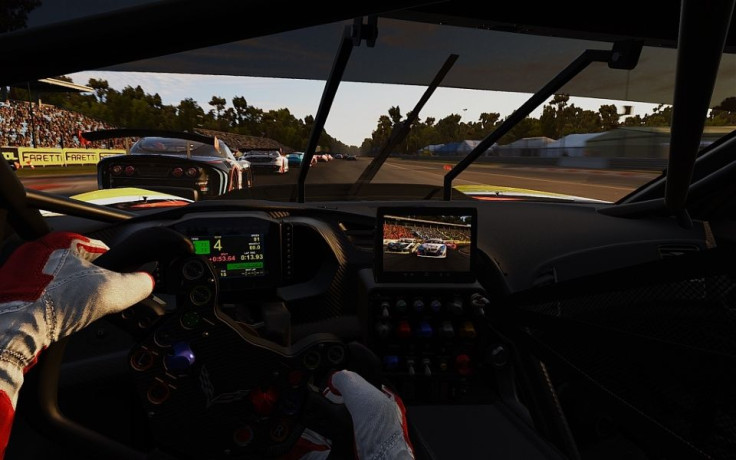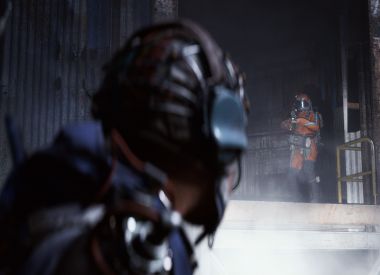With this week’s launch of the Oculus Rift, it seems we’ve officially reached the second coming of virtual reality, and the Project CARS development team is ready to help usher in this new age with a VR-ready update to its ultra-realistic racing sim. Slightly Mad Studios Creative Director Andy Tudor says he believes Project CARS is one of the most feature-complete games available for the Rift at launch.
“Whenever I buy new hardware, whether that’s a new computer or console or sound system, I wanna show it off. And I want something to really test it,” Tudor told iDigi. “So for those that are getting the Rift and wanna have a game that they can really dig their teeth into and pulls out all the stops both technically and graphically, Project CARS is the one for you.”
Project CARS is the latest offering from Slightly Mad Studios, previously known for its work on EA’s Need For Speed: Shift series. Project CARS marks a pretty stark departure from the company’s usual modus operandi, having crowdfunded the project to the tune of $1.3 million, foregoing the process of requesting funds from a major publisher. Naturally, Slightly Mad Studios has cultivated a strong relationship between with the fans who donated their hard-earned money to help bring Project CARS to life.
Over the last 10 months, the studio released a variety of free content for Project CARS, including the Aston Martin GT12 added to earlier this month. Now, the studio is preparing its most ambitious update yet: Oculus Rift support. Project CARS will be one of 30 launch titles for the Rift, sold via the Oculus Store, and the studio says the headset will also be compatible with the Steam version of PC, too. Rift support opens the game up to a new audience.
The addition of Rift support is a major win for a community that has already proven it’s no stranger to expensive taste. Project CARS players will buy expensive racing wheels, gear-shifters, hydraulic-equipped seats and other high-end racing peripherals at a much higher rate than other racing game fans. Tudor sees the Oculus Rift as the final piece of the puzzle, providing a cheaper (and more immersive) alternative to the three-monitor cockpit seats growing in popularity.
Tudor says many devs working on Project CARS have had an eye on the Rift since it first hit Kickstarter, confident the VR headset would bolster the driving experience. As such, getting Project CARS running on the Rift wasn’t so much a case of “if” but “when”. But the team would face plenty of challenges while trying to make that dream a reality, including a need to get Project CARS to consistently deliver a much higher frame rate than many gamers are used to.
“With the Oculus Rift, the stakes were raised even higher though - essentially we had to render two screens simultaneously now (which we were used to when supporting triple-screen setups) and at 90 frames per second,” he said. “I’ve seen the game running at 130+ on some beast machines. But definitely for the ‘average case’ we had to do a lot of performance improvements to maintain the silky framerate that makes the whole experience very comfortable for your eyes.”
Fortunately, the “average case” for the Rift community will be substantially more powerful than the average gaming rig. Oculus’ first VR headset requires a fairly beefy computer to operate, including a Core i5-4590 (or better) processor and a GTX 970 video card, which meant Slightly Mad didn’t need to scale Project CARS quite as drastically as most new PC releases. Those new to the racing sim will also benefit heavily from the studio’s ongoing post-launch support of the game.
From a content perspective, Project CARS will be one of the largest games available for the Rift at launch, with more than 70 vehicles and 100 unique courses spread across 35 locales. In fact, Tudor says the version of Project CARS listed on the Oculus Store is pretty much the standard “Game of the Year” repackaging we tend to see from games with a large amount of post-launch content. The creative director says the Oculus build will also get a sizable update in May featuring new tracks and cars from the actual Project CARS GOTY bundle.
Those obsessed with appearance will be pleased to hear the game remains largely unchanged from its existing releases. Tudor says Slightly Mad made minor changes to the game’s visuals; however, the changes made to Project CARS aren’t the sort fans will notice inside virtual reality.
“We made a number of performance increases across the board in order to keep the graphical fidelity as high as possible,” Tudor told iDigitalTimes. “Since the viewing experience when wearing the Rift is all about close-up items - the feeling of nearby objects being tangible to touch: the wheel, the dashboard, the rear-view mirror - you’re concentrating very much on the things in your immediate proximity. That allowed us to adjust things like levels of detail and draw distance for very far away items since your brain is working in a different way it seems and allows a few savings to be made for ‘far off’ or ‘edge’ stuff.”
Of course, PC gamers won’t be the only ones enjoying virtual reality in 2016. The Oculus Rift and HTC Vive soaked up the lion’s share of the mainstream attention up to this point; however, the $399 entry price for PlayStation VR all but guarantees Sony will remain competitive in the virtual reality space for the foreseeable future. Tudor says Slightly Mad Studios can’t talk about potential Project CARS ports for other VR platforms, yet, but the studio is definitely interested in seeing how each new VR headset is accepted by the public. The creative director says VR will also be a topic of discussion when creating new games, like the upcoming Project CARS 2.
“I think we’ve all fallen in love with virtual reality,” Tudor said. “So it’s fair to say that we’ll be considering it for all future projects.”
***
Be sure to check back with iDigitalTimes.com and follow Scott on Twitter for additional Project CARS coverage throughout 2016 and for however long Slightly Mad Studios continues to support Project CARS in the years to come.


















